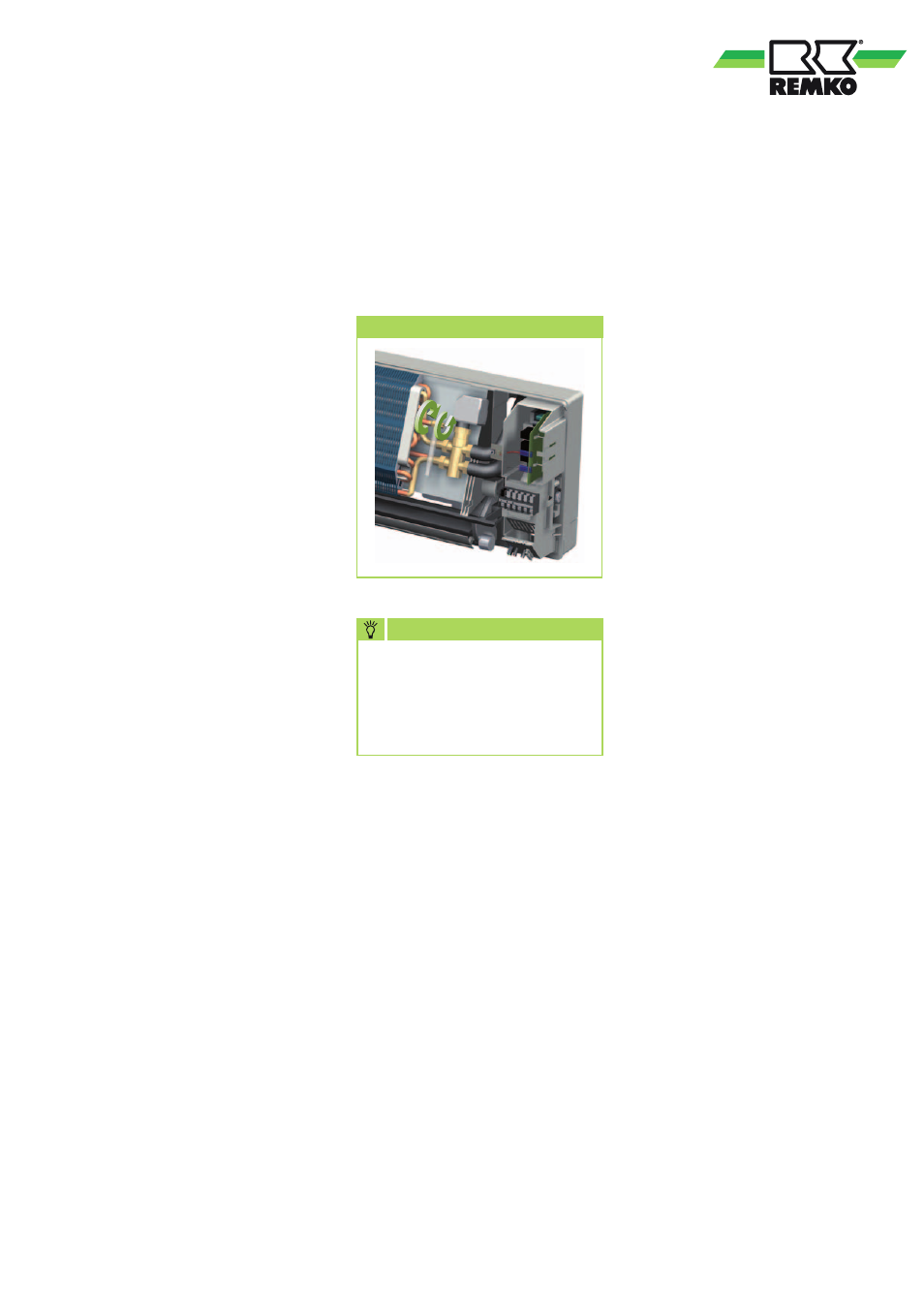Leak testing, Before commissioning, Commissioning – REMKO WLT 25 User Manual
Page 19

Leak testing
Once the connection has been
made successfully, the leak test is
carried out.
1. Flush the system twice with tap
water.
2. Clean the sieve insert of the dirt
trap.
3. Fill the system with water
again and bleed the unit at
the manual bleed valves.
4. Adjust the test pressure to at
least 200 kPa (2.0 bar).
5. Check the connections after
a period of at least 24 hrs
for leaking water. If water is
visible, the connection has not
been properly made. Tighten
the connection or make a new
connection.
6. After a successful leak test,
remove the excess pressure
from the medium pipings if a
water-glycol mixture is used
or adjust the non-circulating
pressure to the required system
pressure.
Before commissioning
Anti-freeze protection for
the medium
If a water-glycol mixture is used,
it is to be pre-mixed before being
put in the system. The desired
concentration is then to be
checked.
Bleeding the system
■
Air may still be in the pipe
lines after the leak test. This
is carried during operation
of the circulation pump to
the next highest point or to
the cold water drain. Here it is
necessary to bleed again.
During manual aspiration,
escaping glycol mixtures must
be disposed of separately.
Do not feed them into
the condensate tray!
NOTE
MAG
■
The preliminary pressure for
the diaphragm expansion vessel
must be adjusted individually
to the system layout,
the volume of the medium and
the installation site.
Valves for hydronic balancing
■
The calculated excess pressure
in the pipe network layout at
the individual cold water outlets
must be adjusted with the pipe
leg regulating valves.
Safety valve
■
The safety valves and their correct
function must be checked.
■
The drain line for the valves is
to be checked for function and
leak tightness.
■
The non-circulating pressure
must then be adjusted to the
required system pressure.
Commissioning
■
Commissioning should only be
performed and documented by
specially trained personnel.
■
Observe the manuals
for the unit and all other
components when
commissioning the entire
system.
Function test of cooling mode
1. Switch the power supply on.
2. Open all shut-off valves if
necessary.
3. Switch on the chiller and
the corresponding circulation
pump. The outlet temperature
must lie between +4 and
+18 °C.
4. Use the remote control to
switch on the unit and select
the cooling mode, maximum
fan speed and lowest target
temperature.
5. Measure and record all
the required values in
the commissioning report and
check the safety functions.
6. Check the indoor unit control
system using the functions
described in the chapter
"Operation". Timer,
temperature setting, fan speeds
and changing to ventilation or
dehumidification mode.
7. Check the correct function
of the condensate line by
pouring distilled water into
the condensation tray.
A bottle with a spout is
recommended for pouring
the water into the condensation
tray.
Manual bleeding
19
